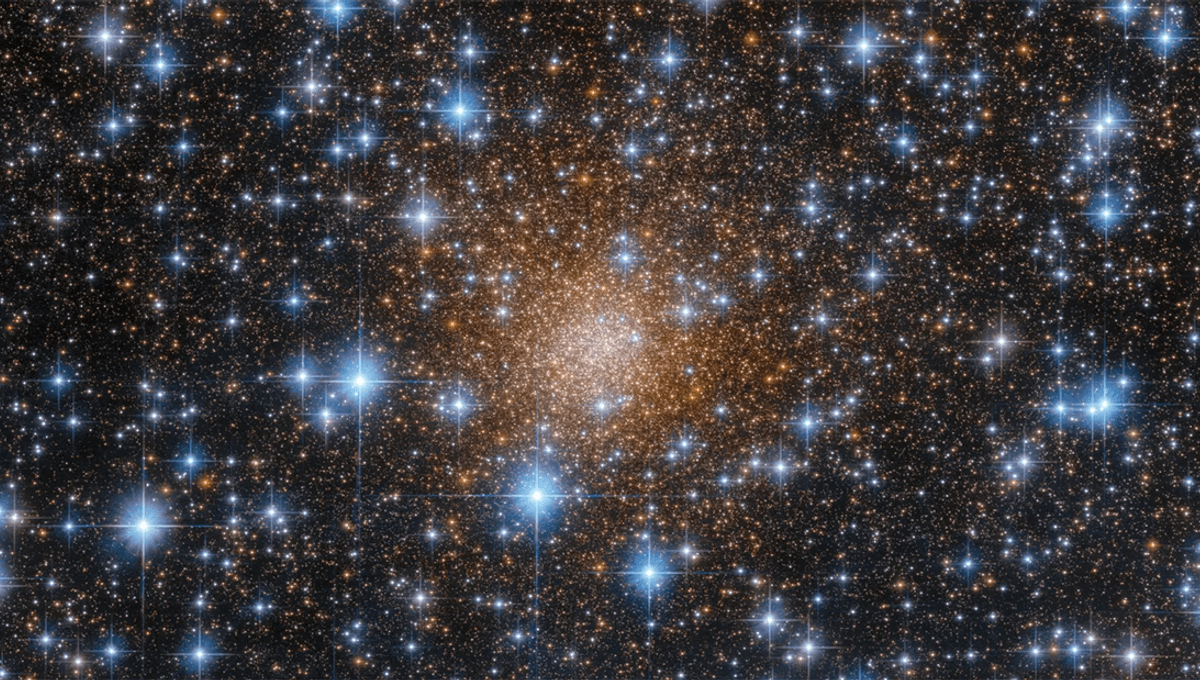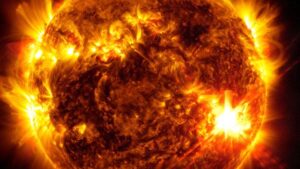Astronomer David Kipping of Cool Worlds fame urged other astronomers to use their telescope time to observe a particularly unusual star that appears to have a very strange or “seemingly impossible” abundance of chemicals.
In recent years, we’ve seen some stars behaving really strangely. The classic example is KIC 8462852, better known as Boyajian’s star or simply the “alien megastructure” star. In 2016 and 2017, the star dimmed in an unusual way, leading some to speculate that there might be a “Dyson sphere” around it created by some advanced alien civilization. It turns out that the dust is obscuring our view of the star, which is of course disappointing for anyone hoping to discover advanced alien life.
But this is not the only star that has recently attracted the attention of astronomers.
One – HD 101065, or “Przybylski’s Star” – beats almost all other stars with its strangeness. Even if it’s not alien (and we have to assume it isn’t until all other natural explanations are exhausted), it could be doing something almost as cool.
The star, though largely overlooked, recently caught the attention of Jason Wright, a professor in the Department of Astronomy and Astrophysics at Penn State University’s Eberly College of Science; and David Kipping, an assistant professor of astronomy at Columbia University and the originator of some pretty cool ideas, including the Halo Drive and turning the Earth into a telescope.
HD 101065 was first discovered in 1961 by Polish-Australian astronomer Antony Przybylski and was immediately noticed as unusual. The star, which is thought to be slightly hotter than our Sun, is known as an “Ap” star, meaning an A-type star that is chemically peculiar.
A-type stars themselves are quite strange. Unlike stars like our Sun, hot A-type stars typically have no magnetic field to slow down the incredible rotational speeds imparted to them at their formation. As a result, they usually retain their incredible spin, making their spectra difficult to analyze.
But Ap stars are different. They do they have a strong magnetic field and rotate slowly. This allows us to get a really good look at the chemical composition of their atmospheres, Wright explains in a blog post on the topic.
When we analyze the light from these stars, it shows that they contain an abundance of silicon, chromium, strontium, europium and other rare earth elements in their upper atmosphere.
But Przybylski’s star is even stranger, and appears to contain elements that really shouldn’t, at least by any mechanism we’ve encountered in nature.
“It is thought to be an extreme member of a class of stars whose surface chemical features are generally thought to be a consequence of chemical fission,” one team wrote about the star in 2004. “However, this theory alone would not explain the presence of elements without long-lived stable isotopes .”
For example, it appears to contain promethium. This is really weird. No known isotope of promethium has a half-life longer than 17.7 years, meaning it must be produced by some kind of continuous process if we want to see it in Przybylski’s star. Further analysis showed that it contained actinium, protactinium, neptunium, plutonium, americium, curium, berkelium, californium and einsteinium. They are difficult to confirm because they do not occur in nature (except, apparently, in Przybylski’s star).
“Unfortunately, these spectra are poorly studied,” explained one team that found short-lived features in the spectra. “For example, the wavelengths of only 22 lines are known for singly ionized californium, which is relatively well studied. Virtually all spectral line tables contain no data for technetium, promethium, and elements with atomic numbers Z > 83, except for thorium and uranium”.
Einsteinium was first discovered in 1952 during the first hydrogen bomb detonation and was considered a synthetic element, or one that could only be made by humans, and we didn’t make much of it – and yet it was discovered conditionally in a star. Californium is also considered a synthetic element and was only discovered as a product after bombarding curium-242 with helium ions. Meanwhile, iron – normally one of the clearest lines seen in starlight – is barely visible.
So what on earth are these elements, many with short half-lives on astronomical time scales, doing in abundance in the atmosphere of an already unusual type of star? Despite more than 60 years of knowledge about the star and some great leaps in astronomical techniques, we still don’t know what’s going on. There are a few ideas, some reasonable but strangely unlikely, and some really exciting explanations.
One possible explanation proposed is that the star has a neutron star companion that bombards the upper atmosphere of Przybylski’s star, causing reactions that produce the elements we observe. But the star does not appear to have such a companion, which leaves us with several other (far more exotic) explanations.
One, outlined in a 2017 arXiv paper, is that the unusual elements result from the decay of undiscovered heavy elements on the hypothetical “island of stability” predicted by physicists, where the elements can be stable again.
“Spectral lines belonging to the short-lived heavy radioactive elements up to Es (Z=99) were detected in the spectra of Przybylski’s star,” the paper explains. “We hypothesize that these unstable elements may be the decay products of a ‘magical’ metastable core belonging to […] an island of stability where the nuclei have a magic number of neutrons N = 184.”
The team suggests that this may have been produced in a nearby supernova. If it’s correct and more research will be needed, of course that would be pretty cool. But there’s another suggestion – it was whispered, according to Wright – that it could be a sign of intelligent life.
It has been suggested in the past that alien species may dump debris on the surface of their stars, which could be an explanation, although it seems unlikely. But it has also been suggested by Carl Sagan and Joseph Shklovsky that advanced extraterrestrial civilizations could purposely place unusual and clearly manufactured elements in their stars to attract attention.
Sending signals into space is energetically expensive, and given the distances involved, you don’t know if your signal will reach a civilization you think might be there based on your observations, or a civilization that has died in the meantime.
Instead, it might make more sense for a civilization bored by loneliness to simply put up unambiguous signs that all other civilizations that have done their science would know to be a sign of tampering. Why spend energy contacting every possible star when you can just put up a huge sign that says “We’re here” or at least one that says “Take a closer look at this star, something interesting is happening”?
This is, of course, quite speculative, and very likely there will be a natural explanation, like the island of stability – which, let’s face it, is also really cool. Or it could be that astronomers are misinterpreting these lines, which would also be useful to know. Discovery will require more observations of the star. Although Kipping gets access to telescopes, observations will need to be made in the Global South to actually see it.
“I don’t understand why this hasn’t happened, and I hope that us talking about this and my video and your podcasts will actually inspire an astronomer out there to spend an hour of their precious telescope time […] I’m just looking at do you at least see the same spectral features,” Kipping told the Event Horizon podcast. “That’s the first question, and then if you see the same spectral features, the next question is, well, we believe them, but what are those lines? Is there an alternative to these radioactive elements? Could it be something else?”
[H/T: Cool Worlds]
An earlier version of this article was published in July 2024.



